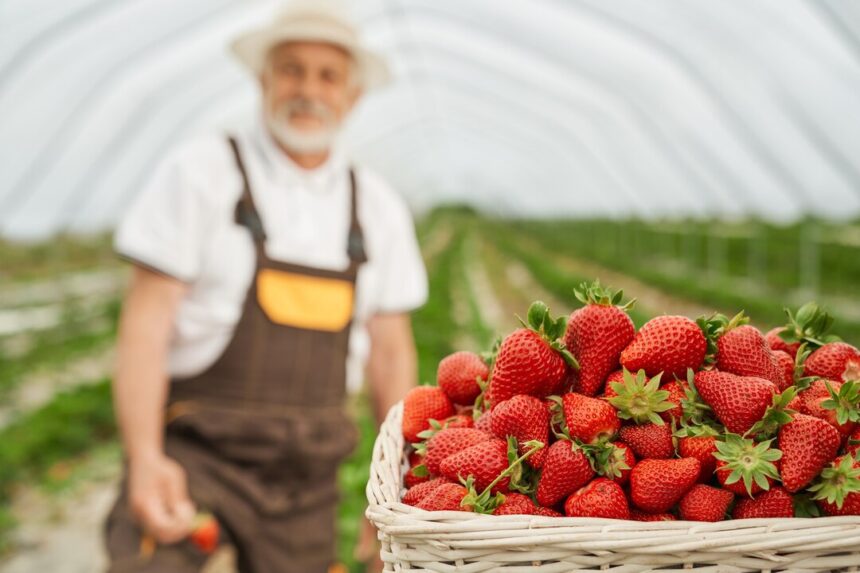Strawberry cultivation in South Africa has witnessed significant growth in recent years, driven by increasing demand for fresh, locally grown produce and favorable growing conditions in various regions of the country. However, achieving optimal quality and yield requires careful attention to cultivation techniques, environmental factors, and crop management practices. In this article, we will explore some proven techniques for enhancing the quality and yield of strawberries in South Africa.
1. Selecting Suitable Varieties:
Choosing the right strawberry varieties is essential for achieving high-quality fruit and maximizing yield. In South Africa, popular cultivars include the Chandler, Festival, and Camarosa varieties, which are known for their flavor, productivity, and adaptability to local growing conditions. Consider factors such as climate, soil type, and market demand when selecting varieties for cultivation.
2. Soil Preparation and Fertilization:
Proper soil preparation is crucial for establishing healthy strawberry plants and promoting robust growth. Conduct soil tests to assess nutrient levels and pH, and amend the soil as needed with organic matter, compost, and fertilizers to provide essential nutrients. Incorporate a balanced fertilizer with nitrogen, phosphorus, and potassium to support plant growth and fruit development throughout the growing season.
3. Irrigation Management:
Strawberries require consistent moisture to thrive, especially during the fruiting stage. Implementing efficient irrigation practices, such as drip irrigation or micro-sprinklers, can help deliver water directly to the root zone while minimizing water waste and reducing the risk of disease. Monitor soil moisture levels regularly and adjust irrigation schedules based on weather conditions and plant needs.
4. Pest and Disease Control:
Effective pest and disease management are essential for protecting strawberry crops from damage and ensuring high-quality fruit production. Implement integrated pest management (IPM) strategies, such as crop rotation, biological control, and cultural practices, to minimize pest pressure and reduce reliance on chemical pesticides. Monitor plants regularly for signs of pests and diseases, and take prompt action to prevent outbreaks and minimize damage.
5. Mulching and Weed Control:
Mulching is a valuable technique for conserving soil moisture, suppressing weed growth, and maintaining optimal soil temperature around strawberry plants. Apply organic mulches such as straw, pine needles, or wood chips to the soil surface to inhibit weed germination and reduce competition for nutrients and water. Mulching also helps protect fruit from soil contact, reducing the risk of rot and spoilage.
6. Pruning and Training:
Proper pruning and training are essential for maximizing fruit production and maintaining plant vigor in strawberry crops. Remove old or diseased foliage, runners, and flowers to promote airflow and prevent overcrowding. Train plants to a compact, upright growth habit to facilitate harvesting and improve fruit quality. Regularly thinning plants and removing excess runners can also help redirect energy into fruit production.
7. Pollination Enhancement:
Strawberries are primarily insect-pollinated, with bees playing a vital role in pollination and fruit set. Enhance pollination efficiency by providing habitat and forage resources for pollinators, such as native bees and honeybees. Avoid using insecticides that may harm pollinators and disrupt natural pollination processes. Consider introducing managed honeybee colonies to orchards to boost pollination rates and improve fruit yield.
By implementing these proven techniques for enhancing quality and yield, strawberry growers in South Africa can optimize their production practices and cultivate successful harvests. From selecting suitable varieties and preparing the soil to managing irrigation, pests, and diseases, attention to detail and proactive management are essential for achieving excellent fruit quality and maximizing profitability. By adopting sustainable and integrated approaches to cultivation, South African strawberry growers can continue to meet the growing demand for high-quality, locally grown strawberries and contribute to the success of the agricultural industry.
Join 'Farmers Mag' WhatsApp Channel
Get the latest Farming news and tips delivered straight to your WhatsApp
CLICK HERE TO JOIN






